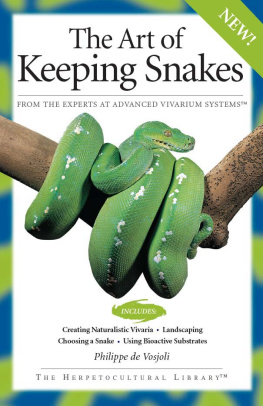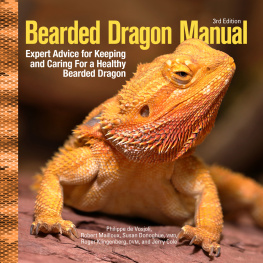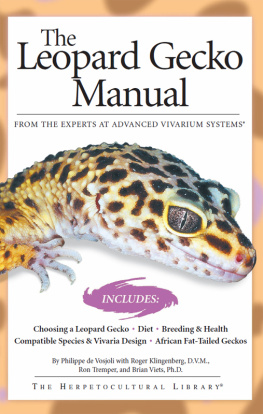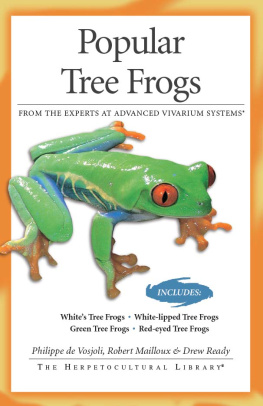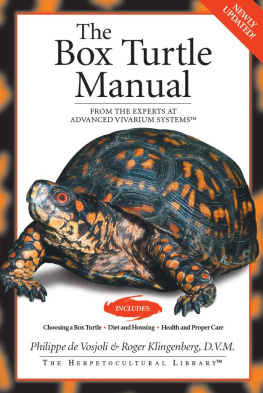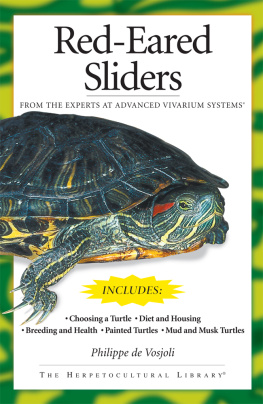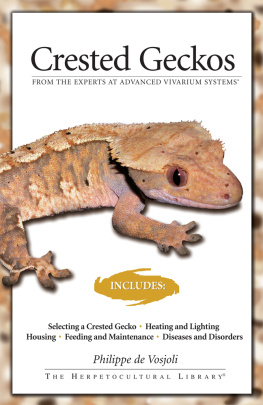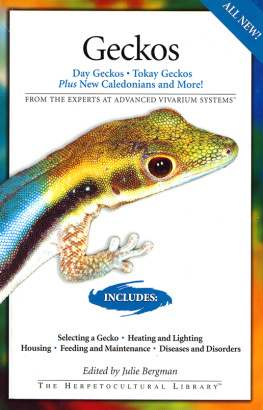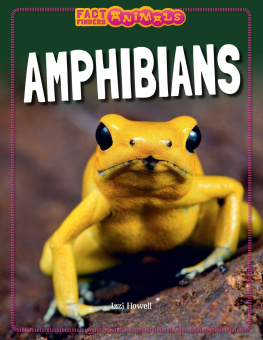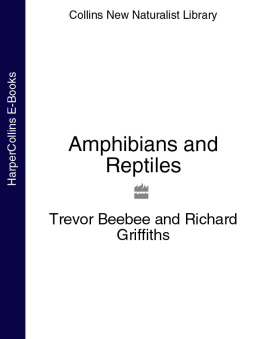Karla Austin, business operations manager
Jarad Krywicki, editor
Erin Kuechenmeister, production editor
Nick Clemente, special consultant
Designed by Michael Vincent Capozzi
All photos by Philippe de Vosjoli
Rachel Rice, indexer
Cover photography by Mark Kostich
Copyright 2004 by Advanced Vivarium Systems, Inc.
All rights reserved. No part of this publication may be reproduced or transmitted in any form or by any means, electronic or mechanical including photocopy, recording or any information and retrieval system, without permission in writing from the publisher, except by reviewer, who may quote brief passages in a review.
LCCN: 96-183295
ISBN: 1-882770-60-9
eISBN: 978-1-620080-45-0

An Imprint of I-5 Press
A Division of I-5 Publishing, LLC
3 Burroughs
Irvine, CA 92618
www.facebook.com/i5press
www.i5publishing.com
We want to hear from you. What books would you like to see in the future?
Please feel free to write us with any comments on our AVS books.
Printed in Singapore
10 9 8 7 6 5 4 3 2
CONTENTS
ACKNOWLEDGMENTS
S pecial thanks go to the following friends for their support, advice, and guidance in the course of assembling the material for this book: Ed and Liddy Kammer of West Coast Reptiles provided animals, direction, information about imports, and interesting late-night discussions on the future of herpetoculture. Chris Estep at Reptile Haven supported the project by offering supplies along with good company, humor, sarcasm, and valuable comments. Ray Busby and David Masur of International Reptile Breeders Association (IRBA) deserve special recognition for supporting my obsession with naturalistic vivaria. Through their San Diego IRBA Vivarium show held in October, they were the first to provide a recognized outlet for vivarium design artists and set a trend that is now spreading nationwide. Credit for inspiration for the chapter about the use of vivaria in education goes to Dan McCarron, a teacher with a vision. Last but not least, I am indebted to Susan Donoghue, V.M.D., for ongoing cutting-edge dialogue and her review of the manuscript.
INTRODUCTION
A lthough Ive kept amphibians for decades, I still cant help watching common species in pet shops and herp (amphibians and reptiles) shows. These fascinating animals come in a variety of sizes, shapes, colors, and personalities, but all seem designed to enchant their owners. Nocturnal species appeal to night owls, while brightly colored, active species make superb daily attractions in naturalistic vivaria (enclosures for live animals). Amphibians excel as childrens pets, centerpieces in planted vivaria, research subjects for amateur biologists, and a lifelong passion for serious herpetoculturists.
For all their beauty and charm, amphibians are relatively fragile animals that require specific temperatures, foods, and enclosures. The species discussed in this book require water or high humidity to thrive, and keepers must pay special attention to the quality of their water. Keeping a pet amphibian healthy and happy requires knowledge about its needs. In this book, I give step-by-step details about amphibian care. Youll learn how best to keep your new pet and how to help it thrive for years to come.
In recent years, the popularity of frogs and salamanders as pets has surged. To keep up with the demand, several species are collected from the wild by the thousands and are now standard fare in pet stores. Unfortunately, these mass-collected species tend to be inexpensive and sold as disposable living toys, typically marketed to appeal to children rather than adults. Because these amphibians are most often marketed to children, the habitats recommended for keeping them are sadly unsophisticated. Consumers often see these amazing creatures in austere and Spartan environmentssmall, unlit, plastic terrariums without plants or filters. These special and beautiful creatures end up debased by the setting in which they appear. This inhumane approach creates far-ranging negative consequences, and it performs a great disservice to the animals (which live impoverished lives and die prematurely) and to the children and adults who purchase them.
In contrast, amphibians kept in attractive, enriched environments display a greater range of behaviors and far longer life spans, providing years of beautiful and captivating activities. These biologically complex (but easy to make) naturalistic vivaria encourage study, creativity, research, and an evolving awareness of the natural world.
Taking the above ideas into consideration, this book plans to present the correct way to keep frogs, newts, and salamanders, with an emphasis on the step-by-step design of decorative and functional vivaria. To the surprise of many, these setups are relatively easy to maintain and comparatively inexpensive, costing about the same as basic aquarium systems for tropical fish. Indeed, many of the species covered in this book can be successfully kept with fish.
This book also aims to raise consciousness and promote education. To address these issues, I included chapters about the benefits of vivaria in the work place and the use of amphibians in naturalistic vivaria as a valuable tool for teaching biology.
As long as Ive kept amphibians and as much as I love to watch the frogs and salamanders in pet shops, Im also aware of the important issues facing wild populations of these creatures. Unmonitored and unmanaged exploitation of amphibians is not acceptable. If we are to continue to be able to keep frogs and salamanders in captivity, we must give attention to conservation, sustainable use, management, and commercial herpetoculture of these species.
CHAPTER 1
SELECTION
Before Buying Frogs and Newts
F rogs and newts are beautiful, fascinating creatures that can enrich your life. However, they must be researched and examined before purchase, not purchased on a whim. Many require specific conditions, such as cool temperatures and live foods, and the design of their setups requires thought and planning. As a rule, frogs and newts are relatively inexpensive, although their setups, if done right, end up costing between sixty and one hundred dollars.
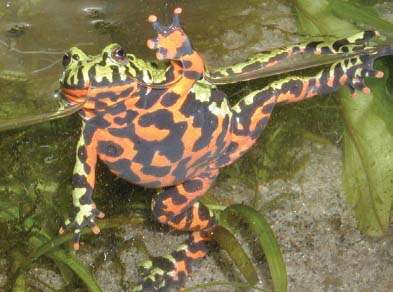
The Oriental fire-bellied toad (Bombina orientalis) is one of the gems of the frog world. Fortunately, it is readily available and easy to keep and breed.
At the outset, ask yourself whether a frog or newt is the right pet for you. What is it that you expect from owning a frog or newt? They are not particularly responsive personal pets and they cant be handled, so any pleasure you derive from them will be from observation. Only close scrutiny reveals the special beauty of these creatures, their unusual forms, their golden eyes, their porcelain skin, the details of their skin texture and pattern, and their variety of colorsfrom subtle to vivid hues. Interesting patterns and behaviors add to the charm of these little beings, which fascinate their owners precisely because they are so alien. Once you realize that observing these animals provides enjoyment, the importance of designing an attractive natural-looking displaya living work of artbecomes obvious.
Selecting Species
The best way to select a species is to refer to books with photographs or, better yet, go to a store and observe live animals. Once you have found a species that appeals to you, take the time to read about its natural history, captive care, and requirements for designing a proper setup, which youll find in this book.
Next page

